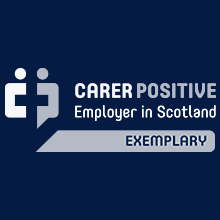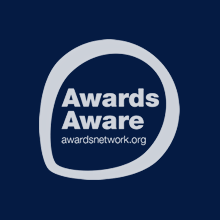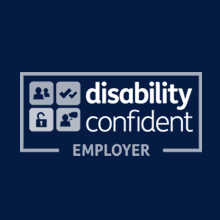The Scottish Cancer Referral Guidelines have been updated and went live on Wednesday, 6th August 2025. We are working hard to update all relevant information on the RefHelp website. If you would like to see the guidelines please click here Scottish Referral Guidelines for Suspected Cancer 2025 – gov.scot
Paediatric Radiology in NHS Lothian is predominately in the Royal Hospital for Children and Young People (RHCYP) on the Little France site in Edinburgh. Some imaging is also performed at St John’s Hospital (SJH) in Livingston for West Lothian patients.
Primary Care clinicians can refer to Clinical Radiology at the RHCYP or SJH via SCI Gateway for Plain Films and Ultrasound using the pathways below. Please note these services are for children and young people only (Aged 0 to 16). From their 16th birthday onwards, referral should be to Adult Radiology Services.
Referral for X-rays are governed by Ionising Radiation (Medical Exposure) Regulations 2018 (IRMER) and adherence is the responsibility of the referrer.
There is helpful information on the Royal Hospital for Children and Young People (RHCYP) webpage that can be shared with Patients/Carers, including information explaining Scans and X-rays.
The Minor Injuries Unit at the Western General Hospital also sees children older than 1 year. However, they can only X-ray children who are 12 years old and above (10 years and above for a wrist). Appointments can be made by phoning 111.
Radiology Advice for Referring HCPs
If a Primary Care referrer has a query about a specific Radiology report, they can contact the Radiologist named on report directly. Relevant email addresses can be found in the Email Directory.
If a Primary Care referrer wants to discuss a referral to Radiology before making a referral (e.g. if indicated) they can get advice from Paediatric Radiology via the following route:
- Phone the RHCYP Imaging Reception (0131 312 0880) and ask for the duty radiologist
J.B. & R.K. 12-12-24
For all Radiology requests: Referrers accept responsibility for dealing with the result(s) and informing the patient as necessary.
How to refer:
Plain Films
All X-ray requests need to be scheduled in by the patient/carer phoning the department. The phone number for RHCYP to arrange this is 0131 312 0880 (Monday to Friday 08:30 to 16:00). The phone number for St John’s Hospital is 01506 524 339 or 01506 524 350 (Monday to Friday 08:30 to 16:00).
Please remember:
- The electronic referral MUST be made before a patient/carer phones for an appointment.
- The referrer must select the correct priority (Routine or Urgent) on the electronic referral before it can be sent.
- Please ask the patient/carer to wait ONE WORKING DAY after submission of a referral before phoning for an appointment, to allow Radiology to vet all referrals in accordance with IRMER rules.
- Patients MUST phone the department to arrange an appointment, they should not present themselves to imaging departments.
The electronic referral pathway for RHCYP Plain X-ray is:
- SCI Gateway: RHCYP >> Clinical Radiology >> LI Radiology Plain X-Ray
Ultrasound
The electronic referral pathway for RHCYP Ultrasound is:
- SCI Gateway: RHCYP >> Clinical Radiology >> LI Radiology – Ultrasound
Please remember that for Ultrasound, the patient/carer does not contact the department to arrange an appointment, and will be contacted directly by the department (usually by post) with an appointment time.
Please find below guidance regarding specific radiological investigations, grouped by anatomical area:
Note on iRefer: In certain instances Radiology have linked to guidance on the iRefer web service. Referrers do not need to go to this website for guidance, guidance is always noted on the RefHelp page, but if referrers do wish do look at this guidance in more detail, they can access iRefer from any computer linked into the NHS Lothian intranet, and by clicking on the Organisation Login (SSO) option. You should login in via SSO before the clicking on the specific links below, to allow the link to take you to the exact guidance referenced.
Head, neck and Spine
Who to refer:
- Lymphadenopathy – Patients with red flag symptoms or those who meet referral criteria should be referred to haematology. Reactive lymph nodes are common in children and normal and do not require ultrasound unless there is significant clinical concern. Please see Lymphadenopathy – RefHelp.
- Head and neck lumps – Ultrasound – Ultrasound can help identify thyroid and other glandular masses, as well as branchial arch and thyroglossal cysts. Many palpable masses are normal lymph nodes which need no imaging. Colour doppler imaging is used to diagnose vascular malformations. Please see Paediatric neck lumps – RefHelp for advice on when to refer vs when to consider imaging first.
- Atypical Sacral Dimples (iRefer) – Only atypical sacral dimples are associated with a high risk for spinal dysraphism. Those that are large (>5 mm), high on the back (>2.5 cm from the anus) or appear in combination with other lesions need referral (see RefHelp for criteria). Patients <6 months old meeting criteria should be referred urgently to medical paediatrics. For older patients, please refer to paediatric neurology. Please see Sacral Dimples – RefHelp.
Who not to refer:
- Abnormal head shape (iRefer) – Referral for imaging from primary care not indicated. Consider neurosurgical referral if clinical suspicion of craniosynostosis or medical paediatrics referral for concerns regarding head size or bulging fontanelle.
- Cervical Lymph nodes – Children with persistent small pea sized (< 2 cm) lymph nodes, especially if infection is ongoing (e.g. large tonsils, dental abscess, eczema or scalp dermatitis) in the absence of red flag symptoms do not require imaging. Please see Paediatric neck lumps – RefHelp, Lymphadenopathy – RefHelp.
- Sacral Dimples – Isolated midline sacral dimples and small pits (<5 mm, <2.5 cm from the anus) that do not have any additional features do not need referred. Please see Sacral Dimples – RefHelp for criteria.
- Back Pain – No role for primary care referral for imaging. Please see Paediatric Back Pain – RefHelp.
MSK
Who to refer:
- Soft tissue lump – Ultrasound – First line imaging investigation. Patients with suspected soft tissue sarcoma should not have a delay for imaging prior to referral and urgent referral should be made urgently to orthopaedics.
- Focal bone pain (atraumatic) – X-ray – First line imaging investigation, particularly if there is unexplained bone pain of increasing severity, persistent pain, associated tenderness, and non-mechanical bone pain, especially if disturbing rest or sleep. If symptoms persist but X-ray is normal, repeat X-ray (after discussion with a radiologist) and consider referral, especially if the patient presents 3 or more times. Spontaneous or minor trauma fracture should raise suspicion of bone cancer. Please see Scottish Cancer Referral Guidelines.
- Suspected developmental dysplasia of the hip. Please see DDH – RefHelp regarding when to refer directly to Paediatric Orthopaedics and when to refer for x-ray.
Who not to refer:
- Suspected Osgood-Schlatter Disease (iRefer) – Imaging is not needed for diagnosis and is only required to exclude other pathology. Although bony radiological changes are visible in Osgood-Schlatter disease, these overlap with normal appearances. Associated soft tissue swelling should be assessed clinically rather than radiographically. Traction apophysitis of the growth plate should be treated symptomatically. Please see Osgood-Schlatters/Sinding-Larsen-Johnansson – RefHelp.
- Limp – No role for primary care referral for imaging. Please see Limp – RefHelp.
- Suspected scoliosis – No role for primary care referral for imaging. Please refer to Paediatric Orthopaedics. Please see Scoliosis – RefHelp.
- Suspected developmental dysplasia of the hip (DDH) – No role for primary care referral for imaging if < 9 months. Please refer urgently to paediatric orthopaedics. Please see DDH – RefHelp.
- Focal chest wall asymmetry – Focal prominence involving xiphisternum or asymmetry of the costochondral / sternocostal junction is common and does not require imaging. If there is ongoing concern e.g. underlying mass, then an ultrasound is the most appropriate first line imaging investigation rather than an x-ray.
- Chest wall deformity (pectus excavatum/pectus carinatum) – Referral via the Scottish National Chest Wall Service.
Cardiothoracic
Who to refer:
- Lower respiratory tract infection – Chest X-ray – Indicated in persistently symptomatic patients despite adequate treatment. Please see NHS Lothian guideline on paediatric community acquired pneumonia for flow chart on follow-up imaging.
Who not to refer:
- Suspected LRTI (iRefer) – Imaging not indicated before trial of treatment. Repeat follow-up imaging not indicated for simple pneumonia. Please see NHS Lothian guideline on paediatric community acquired pneumonia for flow chart on follow-up imaging.
- Wheeze (iRefer) – Imaging not routinely indicated.
Gastrointestinal
Who to refer:
- Palpable abdominal/pelvic mass (iRefer) – Ultrasound – Indicated as first line for assessment and characterisation.
Who not to refer:
- Constipation – No role for primary care referral for imaging. Please see Constipation – RefHelp.
- Inguinal hernia – No role for primary care referral for imaging. Referral via paediatric surgery. Please see Inguinal hernia – RefHelp.
Genitourinary
Who to refer:
- Pelvic pain/vaginal bleeding in adolescents (iRefer) – Ultrasound – Best first line test to assess for pathology such as ovarian cysts and haematometrocolpos.
- Testicular lump / swelling – Ultrasound – Best first line test to assess for aetiology and characterise. If clinical suspicion is of torsion, patient should be referred urgently to paediatric general surgery via A&E.
- Urinary tract infection – Ultrasound – Infants and children who have had an uncomplicated lower UTI should undergo ultrasound only if they are <6 months or have had recurrent or atypical infections. Please see guideline.
Who not to refer:
- Undescended testes – No role for primary care referral for imaging. Please see Undescended testes – RefHelp.
- Testicular microlithiasis (iRefer) – No evidence for follow up or ultrasound surveillance. Routine self-assessment should be advised.
If after reading this guidance a referrer is still not sure about whether referral for Paediatric Radiology investigation is appropriate, please contact the Paediatric Radiology department to discuss, using the contact information in the top half of the page.
Radiology Guidelines are based on the national guidance, which can be found in the iRefer website.
For further information and clarification, those who work in NHS Lothian can access iRefer following the instructions noted on the intranet.













